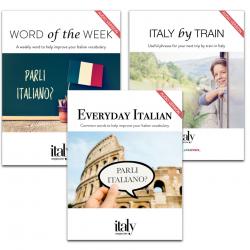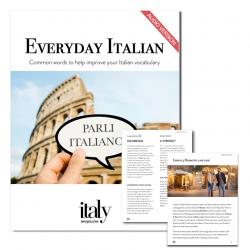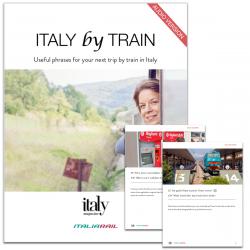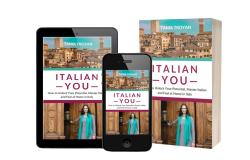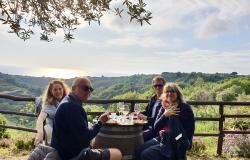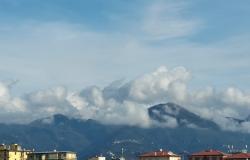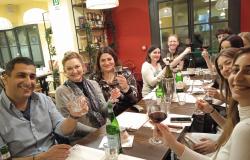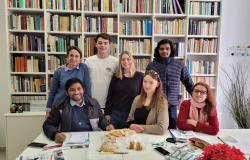Farm Cultural Park in Favara
ITA:

Use player to listen to Italian version
Written by: Antonello Zitelli
A dream that became reality.
In Favara, province of Agrigento, there is an important outdoor museum of contemporary art.
Unique in its kind, it is visited every year from more than 100,000 people coming from every part of Europe.
The “Farm cultural park” was born in 2010 and to give life to the project is notary Andrea Bartoli and his wife, the lawyer Florinda Saieva. After having bought some of the old houses, and with at amsphere of general skepticism, they started this ambitious project. The museum, a practical example of redevelopment and urban regeneration, has come to life inside the Bentivegna’s Courtyard, an area within which there are seven others small courtyards featuring buildings of Arabic origin.
The place, truly an open-air art gallery, has become also a cultural and touristic center. The visitors can admire the giant masterpieces and modern art installations that are located in the terraces, the roof gardens and in the courtyards. Exhibitions are periodically set up, with book presentations and classes in architecture. Over time, residences for artists have been arranged, bars, restaurants and B&Bs. The British blog “Purple Travel” has ranked this location as the 6th best place in the world as tourist destination for contemporary art lovers.
Scritto da: Antonello Zitelli
Un sogno diventato realtà.
A Favara, in provincia di Agrigento, sorge un importante museo d’arte contemporanea all’aperto.
Unico nel suo genere è visitato ogni anno da oltre 100 mila persone, provenienti da ogni parte d’Europa. Il “Farm cultural park” è nato nel 2010. A dare vita al progetto, il notaio Andrea Bartoli e la moglie, l’avvocato Florinda Saieva. Dopo aver acquistato le vecchie abitazioni, tra lo scetticismo generale, hanno avviato il progetto. Il museo, un esempio pratico di riqualificazione e rigenerazione urbana, ha preso vita all’interno del Cortile Bentivegna, un’area al cui interno vi sono altri sette piccoli cortili con costruzioni di origine araba. Il luogo, una vera e propria galleria d’arte a cielo aperto, è diventato anche centro culturale e turistico. I visitatori possono ammirare capolavori giganti e installazioni artistiche moderne collocate nelle terrazze, nei giardini pensili e nei cortili.
Periodicamente vengono allestite mostre, presentati libri e organizzati corsi di architettura. Nel tempo sono nate residenze per artisti, bar, ristoranti e bed and breakfast. Il blog britannico “Purple Travel” lo ha collocato al sesto posto al mondo come meta turistica dell'arte contemporanea.



